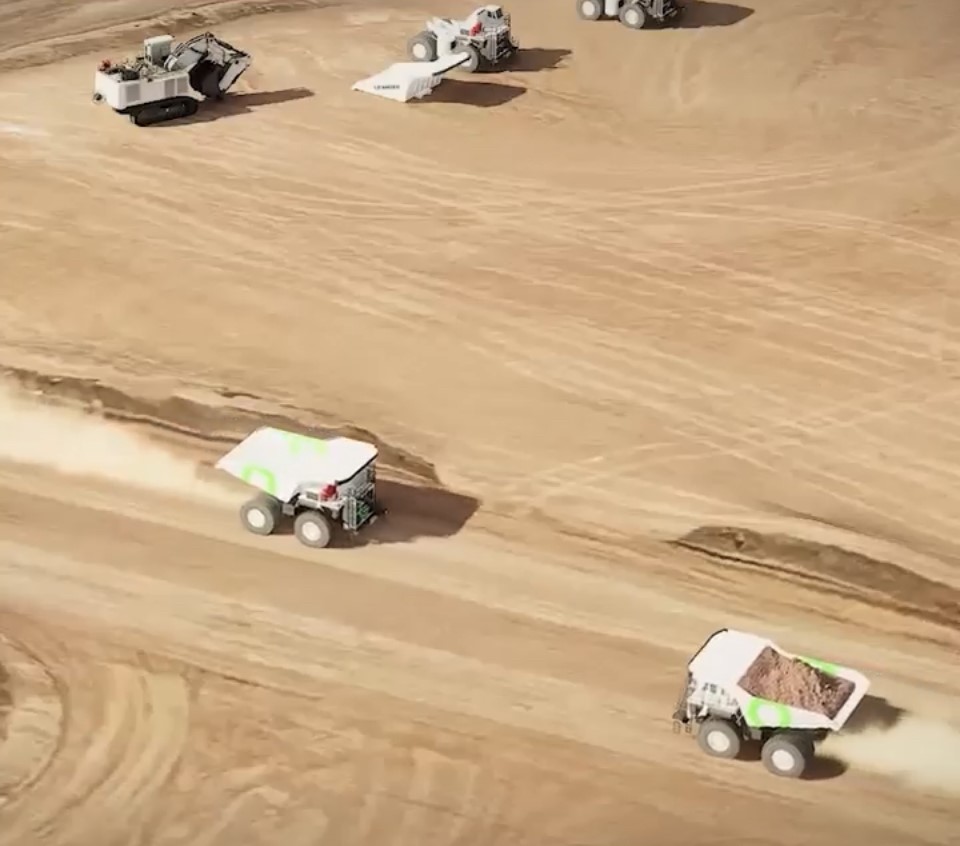Fortescue has released a short video giving some additional insight into the scale of its planned zero emissions mining fleet at its own iron ore mining operations going forward as part of its interim 2030 targets. Fortescue has already agreed to purchase a fleet of 120 zero emissions T 264-based haul trucks from Liebherr, currently expected to be a mix of battery electric and battery – green hydrogen fuel cell (FCEV). This commitment it has said represents approximately 45% of the current haul truck fleet at Fortescue’s operations – which would mean a total current fleet size of about 267 mining trucks that would need to transition to zero emissions by 2030.
Fortescue calls its plan Real Zero by 2030. It means Real Zero terrestrial emissions (scope 1 and 2) across Fortescue iron ore operations by 2030. “Real Zero means no fossil fuels, and where possible, no offsets. Offsets must only be used as a temporary solution while the technology or innovation required to completely eliminate fossil fuels is developed.” It plans to plan to invest US$6.2 billion in capital to realise this aim. In addition to being the immediate action that is needed to help address climate change, this investment is also expected to generate economic returns by eliminating its need for diesel, natural gas and carbon offset purchases.
The video stated that the mobile mining fleet will use high capacity DC fast charging, and aside from mining trucks says the mines are likely to need 60 zero emission dozers, 50 zero emission graders and 40 zero emissions water carts. Excavators were not mentioned, but Fortescue has said it has already committed to purchase three electric 400 t class excavators. A prototype Offboard Power Unit (to power a Liebherr electric R 9400 excavator previously delivered to site) and a prototype 3 MW Fast Charger (to charge prototype battery electric haul trucks, initially the ‘Roadrunner,’ based on a converted 240 t class Terex MT4400) are already at the Christmas Creek iron ore mine site. Fortescue has also agreed to acquire two battery electric locomotives.
Energy will be supplied by 1 GW of solar farms and almost 1 GW of wind farms. There will be a major focus on upskilling and retraining Fortescue employees to operate and maintain this new equipment, with the operations integrated and optimised through remote operations centres to maximise efficiency.
All of these machines will require a lot of battery development and prototype batteries leading to more sustained production. This was partly addressed last week, when Fortescue opened of a new state-of-the-art technical innovation centre via its fully owned subsidiary WAE Technologies in Kidlington, Oxfordshire, UK. The US$23 million site will be home to 300 highly skilled workers, with up to 50 more jobs to be created across the next year and will focus on the technical development, testing and prototype production of batteries and zero emission powertrains for a wide range of applications, including motorsports, mining haul trucks, and other off-road and automotive applications.
Fortescue Executive Chairman and Founder, Dr Andrew Forrest, said: “This new technical innovation centre in Kidlington will not only drive the leading edge of decarbonised motorsports, but also lead the way to decarbonising heavy industry as well. Fortescue bought Britain’s best racing battery maker not only to help decarbonise our own operations, but to help other businesses to adopt zero emission technologies as well, and cement UK as a green technology and manufacturing leader.” Among the first batteries produced at the Kidlington site, will be those used to power the mentioned prototype 240 t mining haul trucks in Australia.
Fortescue WAE CEO, Judith Judson, said, “Today marks the latest milestone in the evolution of Fortescue WAE into a global zero emission technology solutions and manufacturing company. Fortescue and other companies need the battery and green technology solutions that will be manufactured here at Kidlington, to decarbonise their operations. The world can’t afford for businesses to wait, so we are showing them that moving to zero emission solutions and away from fossil fuels is not only possible, but can be profitable as well. The knowledge we have learned from racing is applied to everything we do, including our mining haul truck battery systems and other electric powertrains. It is what sets Fortescue apart.”
The Kidlington site is co-located on the Oxford Technology Park and will have the capacity to produce and test up to 500 prototype battery systems per year with a total production capacity of 50 MWh/annum. The facility allows Fortescue to expand electrification capability to support the growth of the business and the drive for green tech and zero emissions.











